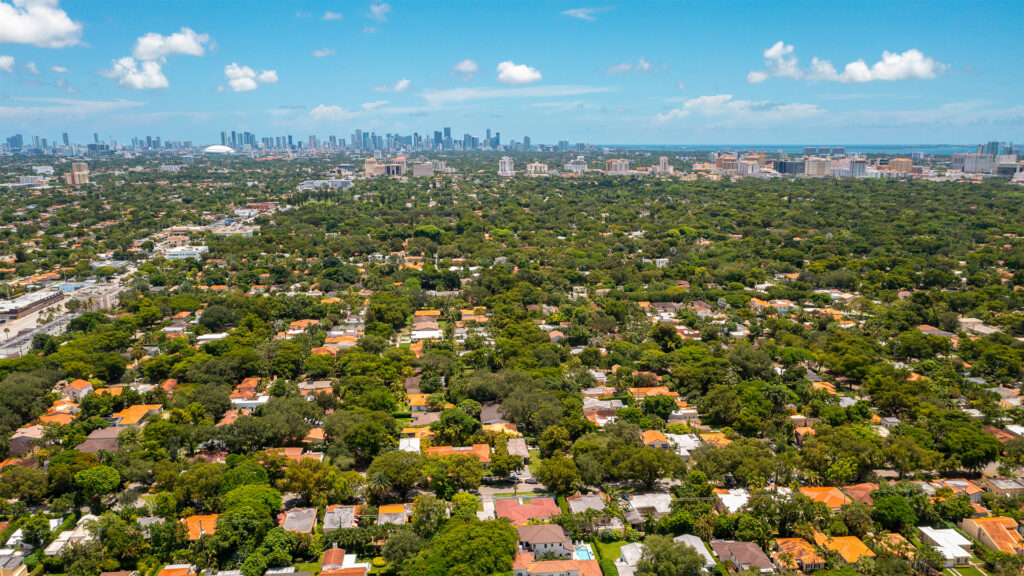By the Miami Herald Editorial Board
Miami-Dade County has long been known for its glaring duality, a place of “haves” and “have-nots.”
That’s especially apparent when it comes to tree canopy. The “haves” often reside in neighborhoods like Coral Gables, Pinecrest and Miami Beach, where oaks and other trees shade beautiful homes. Meanwhile, neighborhoods like Liberty City, Overtown, Little Havana and Hialeah are frequently unshaded. Life there can be a concrete-covered existence, baking in the sun.
When a tree grows in Coral Gables, but not in Overtown, that’s significant. As climate change alters Miami-Dade, trees have become a mechanism to protect residents from record heat — and, potentially, a measure of affluence.

The county has tried to craft ways to help handle the heat, issuing heat advisories during the summer, naming a heat czar and attempting, unsuccessfully, to protect those who work outdoors. But it has not been enough. We need more trees.
A months-long investigation by Miami Herald reporter Alyssa Johnson shows how the county’s plan to offset heat by planting more trees has fallen short due to rapid development and hurricane damage, plus poor maintenance and improper planting.
Long before last year’s record heat wave, the county had begun recognizing that places across Miami-Dade were suffering from an increasingly brutal sun and hotter temperatures. So, in 2007, officials drew up a document called “Greenprint For Our Future: Street Tree Master Plan.” The goal: to get the county to 30% tree coverage by 2020.
Seventeen years and millions of dollars later, the article indicates, the county isn’t reaching that target — instead hovering around an average of 20%, the same as it has for the past decade. There are indications, the story noted, that the county has planted more trees in recent years, especially since 2021.
Overall, the story found that wealthier areas have maintained lush public landscapes. Other parts of the county haven’t. All stakeholders interviewed, including Miami-Dade Mayor Daniella Levine Cava, agreed more needs to be done.
This disparity between neighborhoods, if not corrected, may lead to a form of racism in which only people in predominantly white and wealthier areas can live in the relative comfort of shade, while underserved communities, often predominantly Black and Hispanic, have to deal with climate change without that added protection.
Depending on the species, it takes five to 10 years for a sapling to mature enough to contribute to the canopy. In Hispanic communities, the county’s planting and tree giveaway efforts have not kept up with the canopy loss resulting from rapid development and storm damage.
Hialeah’s canopy cover decreased between 2016 and 2020. So did other lower-income, high-minority cities. Canopy cover in Opa-locka, overwhelmingly Black, also fell significantly.
“Unfortunately, the people who are being most heavily impacted are the people who have the fewest resources to be able to handle it,” Evan Mallen, senior analyst at the Georgia Institute of Technology’s Urban Climate Lab, told the Miami Herald’s Johnson.
As South Florida grapples with climate change, trees have become an increasingly valuable resource, not just for shade. Areas with fewer trees are more vulnerable to flooding and heat-related illnesses. They also tend to have higher rates of water and energy use as residents rely more on air conditioning for cooling.
This inequity has environmental and public health consequences. As we know, the summer heat can be deadly, especially for people who have no choice but to live in sweltering conditions because they can’t afford higher electric bills.
Levine Cava in August told the Herald she will build “the first comprehensive, ambitious and concrete plan to get to our 30% goal with a priority on areas with lower-than-average tree canopy and income levels.”
We should hold her to her word. But this effort isn’t the county’s alone. Private landowners must also key play a role in planting trees and refraining from cutting them down, as Levine Cava noted.
It remains to be seen if the county can catch up on tree equity fast enough to reduce future climate impacts for that majority of residents. The “haves” have had a head start in readying for storms and floods. Now others deserve the same natural protections.
This opinion piece was originally published by the Miami Herald, which is a media partner of The Invading Sea. Miami Herald Editorial Board members are: opinion editor Amy Driscoll and editorial writers Luisa Yanez and Isadora Rangel.
If you are interested in submitting an opinion piece to The Invading Sea, email Editor Nathan Crabbe at nc*****@*au.edu. Sign up for The Invading Sea newsletter by visiting here.



